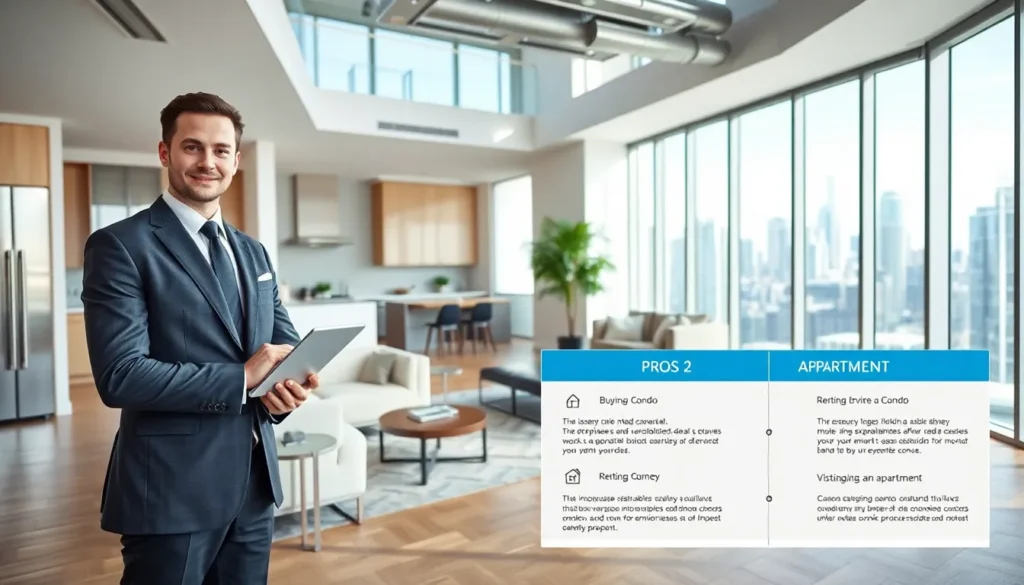Table of Contents
ToggleRenting a house for the first time can feel as daunting as trying to find a needle in a haystack, if the needle were a stylish two-bedroom townhome and the haystack was filled with questionable Craigslist listings. But fear not. Whether you’re looking for a cozy nook or a place with enough space for three cats and a dog, this guide simplifies the process. With the right strategies, you can transform from a rental newbie to a leasing legend. Let’s jump into the essentials.
Understanding Your Needs

Before diving into the sea of rental listings, it’s crucial to chart your course. Each individual or family has unique needs that can significantly shape their search. First, determine how many bedrooms and bathrooms are imperative for comfortable living. Is a home office a must for remote work? Or perhaps an extra room for guests? Breakdown these requirements as priorities so you know what to look for.
Also, consider your lifestyle. A single person might prioritize proximity to vibrant nightlife, while a family may value schools and parks nearby. Figure out what truly matters to you and write it down. This not only focuses your search but also helps avoid the all-too-common pitfall of getting distracted by flashy online photos of places that don’t meet your essential criteria.
Setting a Realistic Budget
Now that the dream has started taking shape, let’s tackle the wallet question. Rental prices can range from budget-friendly to heart-stoppingly high. Start by determining how much you can comfortably afford to spend each month without sacrificing essential needs like food or that Netflix subscription.
Generally, a good rule of thumb is spending no more than 30% of your monthly income on housing. This ensures you’re not financially stretched, allowing for all those other fun adulting expenses like groceries, transportation, and maybe, just maybe, a little fun time. Don’t forget to factor in additional costs like utilities, internet, and any maintenance fees. Being overenthusiastic and renting beyond your means can turn your dream home into a source of stress quicker than you can say “unexpected bills.”
Researching Neighborhoods
Finding the right neighborhood is half the battle won. This is where your dream home will sit on the battlefield of life, so do your research. Consider safety, amenities, schools, and commute times. Few things are more frustrating than a long daily commute to work. Nobody wants to spend hours on the road when a quick bike ride or a short stroll is an option.
Choosing the Right Rental Property
Once the neighborhoods have been narrowed down, it’s time to investigate specific rental properties within those zones. Create a list of places that tick your boxes, but don’t just stop at the listing, visit the sites and check out what’s around.
Evaluating Amenities and Features
Amenities can dramatically enhance your living experience. While some might prioritize a gym on-site, others could lean towards in-unit laundry or a backyard for summer barbecues. Make a list of must-have features versus those nice-to-haves to help ensure you’re renting a place that enhances your daily life.
Inspecting the Property
Once you’ve shortlisted potential rentals, the next step is to inspect these properties in person. It’s easy to be charmed by bright walls and shiny countertops in photos, but seeing the property firsthand reveals the real story.
Look for red flags, stains on ceilings could indicate water damage, while strange smells might hint at underlying issues. Bring a checklist along to help you evaluate each place systematically. Not only does this help keep you organized, it also makes it easier to compare properties later. If possible, take a moment to chat with current tenants to glean valuable insights about the place and landlord.
Navigating the Application Process
With the perfect rental firmly in your sights, it’s time to navigate the often tricky application process. This phase can be a bit overwhelming, but compartmentalizing tasks often helps.
Understanding Lease Agreements
First up is understanding the lease agreement. Carefully review the terms. Know the length of the lease, cleaning and maintenance expectations, and specific regulations about things like pets or guests. Remember, signing an agreement means you’re legally bound, so pay attention to details.
Knowing Your Rights As a Tenant
Familiarize yourself with tenant rights in your state. Issues can arise during tenancy, and knowing the protection laws helps ensure you’re treated fairly. If you feel something isn’t right, understanding your rights can empower you to make informed decisions.
Preparing for Moving Day
Moving day doesn’t have to be a horror show worthy of a reality TV series. Preparation is key. Create a checklist well in advance and start sorting items into what you’ll keep, donate, and discard. Booking a reliable moving service or enlisting friends can help simplify the process.
And don’t forget about utilities. Set them up ahead of time to ensure a smooth transition.




